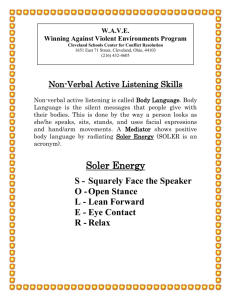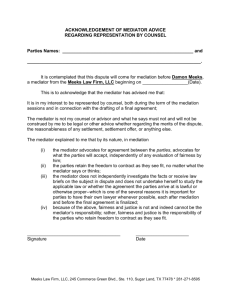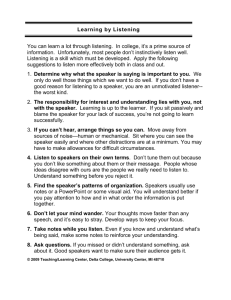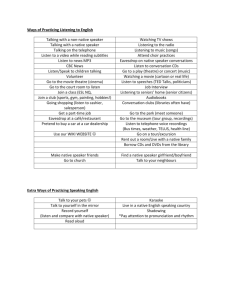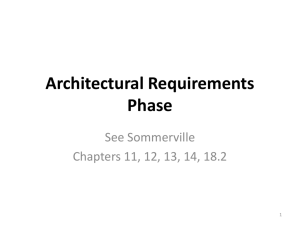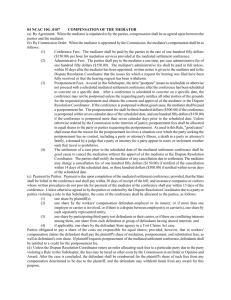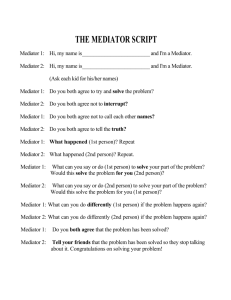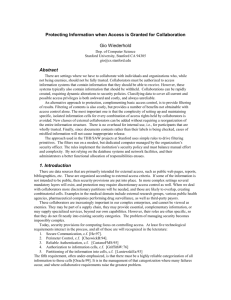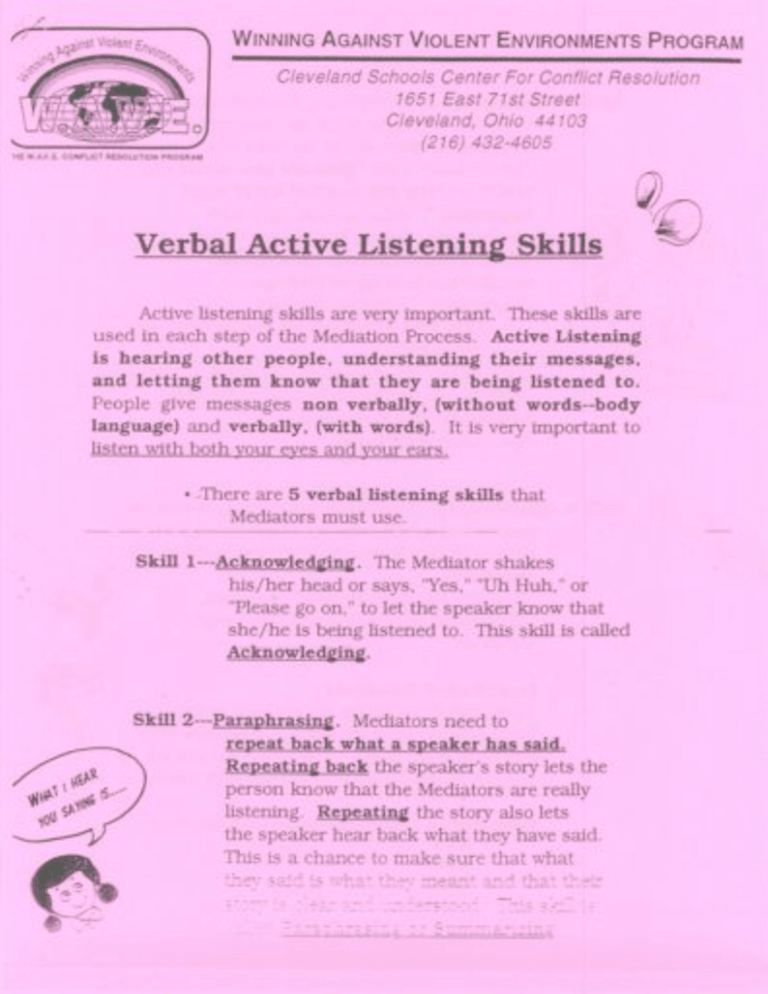
WINNING AGAINST VIOLENT ENVIRONMENTS PROGRAM
'HE W.A.V.E. CONFLICT HESOLUTION
PROGRAM
Cleveland Schools Center For Conftct Resolution
1651 East 71 st Street
Cleveland, Ohio 4410'
(216) 432-4605
r;)
Verbal Active
,()
Listenin
Active listening skills are very important.
These s . s are
used in each step of the Mediation Process.
Active Lis ening
is hearing
other people, understanding
their me sages,
and letting
them know that they are being listened
to.
People give messages
non verbally, (without
words -body
language) and verbally, (with words). It is very impo ant to
listen with both your eyes and your ears.
-----
Skill
..,ThereMediators
are 5 verbal
must
--
listening
use.
skills that
l---Acknowled~ini.
The Mediator shakes
his/her head or says, "Yes," "Uh Huh," 0
"Please go on," to let the speaker know tij.at
she/he is being listened to. This skill is tailed
Acknowledi!ifii!.
SkilI2---Paraphrasin".
1\1ediators need to
repeat back what a speaker has said.
Repeatin~
back the speaker's story lets me
person know that the Mediators are reall:
listening.
Repeatin~
the story also lets
the speaker hear back what they have sald.
This is a chance to make sure that what
.
L~e>l S2id is \'vhat tb,ev me2~t
~ ~::.=--,- ~~ -,
-' ---,'.'
,- -, -, ._---
2"J.QL'-J.att'ecei,
- --,--
,~
-',- " 0
Ski113--~Reflectin~.
After repeating the speaker's
story, the Mediator helps the speaker identify
how she/he feels about the situation.
The Mediator asks, "How did that make you
feel?" or "How did you feel about what
happened?"
lfthe speaker says how
she /he feels while telling the story, the
Mediator should repeat back to the
speaker the feeling or feelings.
For example: A Mediator would say,
"O.K. I hear that you are feeling hurt and
angry, etc."
Feelings are very important.
In order to solve
conflicts people need to be able to get their
feelings out ahd listened too.
This skill is Reflectin2.
-
0 en-Ended
uestions.
Open-ended questions are the best to use
because they allow the people to explain their
stories in more detail. This helps the parties
and the Mediator understand
the problem is.
Open-Ended Questions begin with the words:
Who
(?'\
,. Wh
at
-'---,
. /-
.
'
}1";\"T1.<
'f''J .:J.~i 'T'\
"""'-
-. ~---
i
-A
\ s:
'~_//
---~
--,,-
o;//'
Closed-Ended ~ions.
These are
questions that can be answered with yes
or no. If a Mediator is having trouble
getting a person to talk, she/he can ask some
closed-ended questions.
When the person
feels more comfortable speaking, ask openended questions.
GOqD LISTENERS MAINLY ASK O~-END~TIONS!
Skill 5---Creditin~.
After the Mediator listens to
a speaker, she/he will say, "Is there anything
else you want to add?" If there is not. the
Mediator shoUld thank the person for
speaking and telling their side of the story.
Mediators should also thank the other
~-I2grty
for waiting hisLher turn to speak.
Thanking people for speaking and for waiting
helps people feel good about being a part of the
.
---------------------
process.
This skill 'is Creditin2.
.
, ".
-
S stands
.
.
- ~--
~
-
-
-
--
-.-
-
for~uarely
K~~~
Squarely Face the speaker.
When standing or sitting and talking to a
person, never slouch.
0 stands
forQpen Stance
. Mediators v.rillput their arms dovm to their
sides or fold their hands in front of them.
.
U
Doing this shows you are paying attention
and are not bored or uncaring.
. Never cross your arms in front of your chest.
L stands for Lean Forward
. When talking to a person, the Mediator will
lean a little forward.
. The Mediator's attention is centered
completely on the person speaking.
E stands for Eye Contact
. Eye Contact is the most
.
important
part of
body language.
If eye contact is not made, the person
'speaking might feel she /he is not being
listened to, respected, .or cared for.
.~
..
~
. NOTE: In some cultures, eye contact is a
fonn of disrespect. Mediators need to
understand the culttiral background of
the peopie they are working with.
R stands for Relax
. Just Relax!!
,-:-::-::-::-.~._.
~---::-~-=--:-:-:-:.--R-eta:xi11g=1'Jtlts-::c-everyone
at-::ease:
-::-:::::=-:
,--
- --
r
"---
~
Iv
'If
)
.~
.~
C>Copyright
.£;~
1990. RevJ;oed. 1996.
The Winning
.Against Violent Environments
Confliet Resolution
Program
(WA.V.E.).
All Rights Reserved.
- '-'. .-:--,--
,- -
-----j, i
-~~'~""
-~~
, "i,'r"
:
~'I/\"'/,'
~
"::"::'::::..
, ':::
~
THE W.A.V.E. COHFUCT
RESOLUTION
,
'c='
- -. - - - --
:::.-~
,,'
~,
;:"
~~
;:::
L.,' L"'~":'c,,'t
